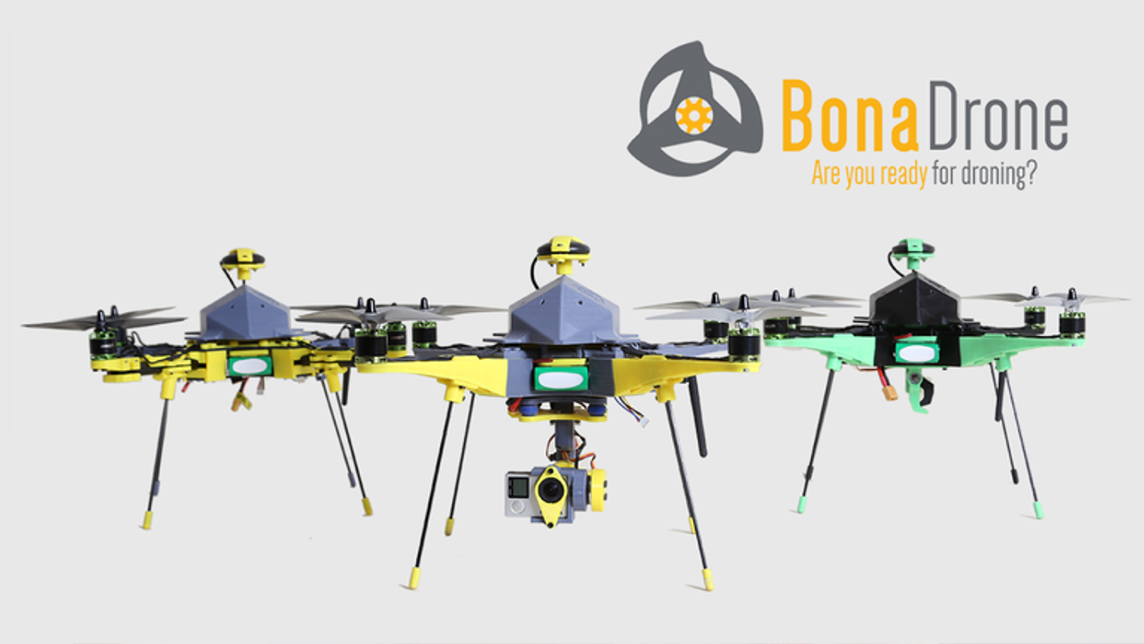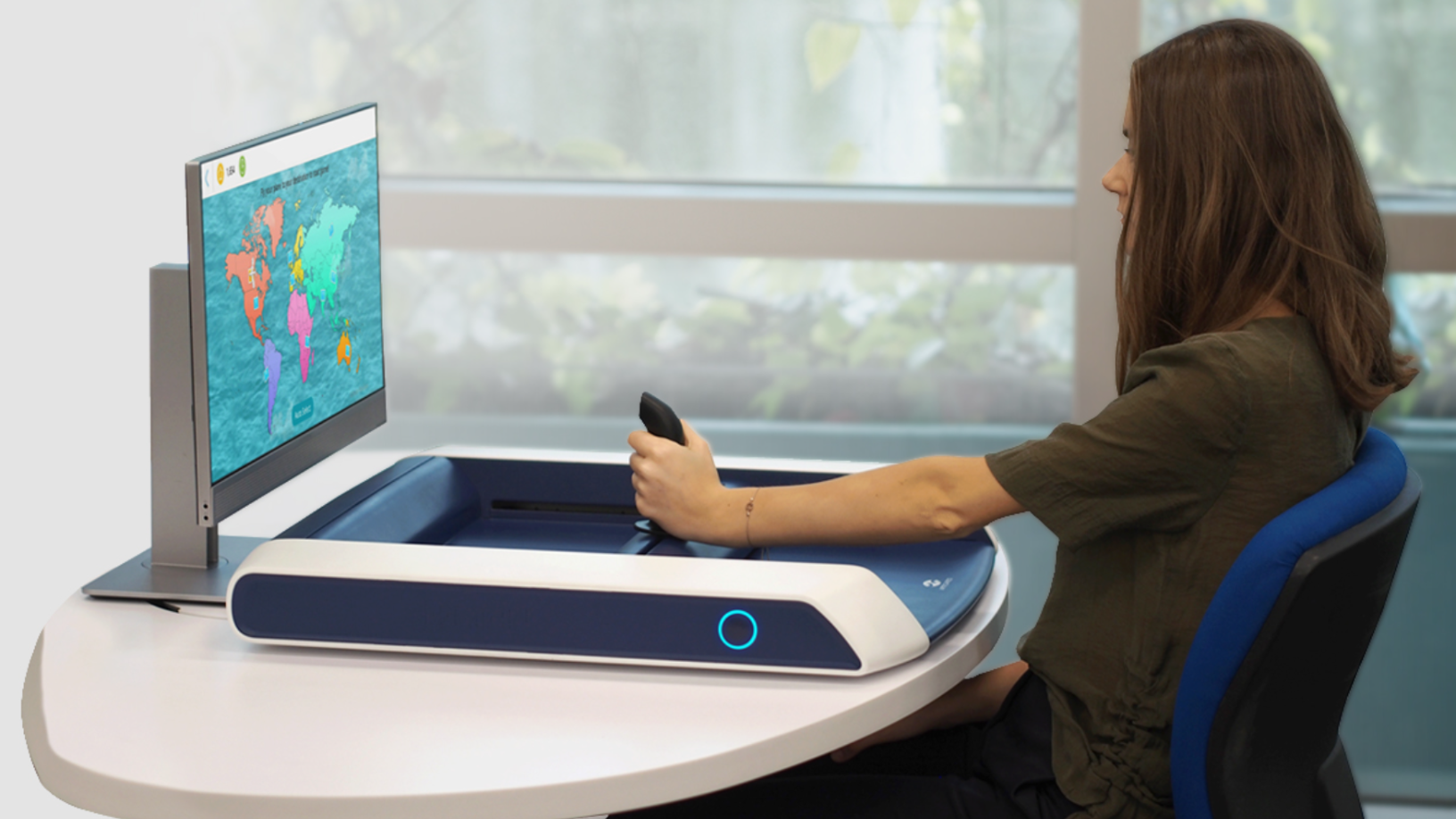The brainchild of five childhood friends from a small Catalan town, Barcalona-based Bonadrone has developed the first DIY drone kit created entirely by 3D printing. Still in the early stages of funding, Bonadrone is combining two technologies that are primed to have a huge impact on daily life. Its products are already being trialled by educators and are available for sale to the public, who are invited to give feedback towards development.
Bonadrone is promoting its products as customizable drones with multiple functionalities. It hopes its DIY drones will provide a much-needed boost to teaching and enrollment in Information and Communication Technologies (ICT), and Science, Technology, Engineering and Mathematics (STEM), the latter which is suffering from a Europe-wide drop in educational take-up.
"We realized that the flexibility and potential afforded by 3D-printing is unrivaled by other forms of production," comments Àlex Cazorla Solà, Bonadrone Co-founder and CMO. "Anyone can print their own Mosquito [Bonadrone's first drone model on the market] as Bonadrone also provides this information in a printable kit. The Mosquito is as easily re-printable as a Lego figurine.”
Revolutionary educational potential
The current deficit in both ICT and STEM graduates in terms of projected market demand is worrying EU education bodies. According to Eurostat data, European interest in STEM subjects is declining, with low levels of entry to STEM careers and tertiary education courses. The lack of interest in STEM subjects is contributing to weakening European competitiveness in the sector at a time when increasing numbers of jobs require STEM proficiency. By 2020, more than 800,000 STEM sector jobs will be unfilled in the EU. Within ICT, the gap between demand and supply of specialists will grow to around 500,000 EU-wide by 2020.
This is one reason Bonadrone developed its Mosquito 150 drone specifically to target the education sector. The Mosquito 150 has an accessible price tag “to bring technology closer to the people,” according to Josep Tomàs Vergés, Bonadrone CEO and Co-founder. The product aims to empower educators in areas where many currently lack skills and resources, such as Computer Aided Design (CAD), 3D printing and programming. Bonadrone hopes students will be inspired by the arguably entertaining and engaging 3D-printed drone which teachers can use as an educational tool together with didactic materials adapted to institutions' specific STEM and ICT needs. The company is also developing courses for teaching various subjects using drones.
In May, Bonadrone was awarded a prize for its potential in edtech at a Madrid edtech investment forum. It is also trialing products at Barcelona's Edukative Robotics Educational Training Center and at the Polytechnic University of Catalonia, which is using Bonadrone's more advanced model, Mosquito 450, as part of its master's degree in Applications and Technologies for Unmanned Aircraft Systems.
Drone market explodes
The global drone market is seeing rapid growth: research firm Gartner predicts the global market for recreational and commercial use drones will almost double in value from US$6 billion in 2017, to US$11.2 billion by 2020, with an increasing number of manufacturers offering kits or pre-built models.
The 3D-printed and customizable models, however, are new to the market. For Bonadrone: “We at least should be able to build the drones we want, and not only the mass-produced ones on sale today.”
Bonadrone claims its technology will allow its drones to be repaired at low cost because parts can be replicated on a 3D printer, thus avoiding the expensive components of competing models and assisting the modulization of the product, its other key USP. The Mosquito 450 drone can be purchased pre-assembled, in pieces ready for assembly, or in a pre-printed kit. Bonadrone encourages the purchase of unassembled drones to boost learning, as well as product customization. Users can choose different designs or performance level, for example by selecting a four- or eight-propeller kit and accessories. Users can also add a carrying mechanism or gimbal for photography, and there are additional features in the offing such as arms with LED display and first-person view control.
Bonadrone has offices in Barcelona's local government-funded Canòndrom creative industries research park. The company was initially funded in 2015 by its five co-founders, followed by a crowdfunding campaign a year later. Earlier this year the company inked a €150,000 financing round with an undisclosed backer. Bonadrone has also announced a strategic alliance with US edtech company OnPoynt to boost STEM-focused drone projects and distribute its products in the US. To what extent Bonadrone's product ultimately takes off remains to be seen but the company is involving its early fans in its future development. Users can provide suggestions on improvements and product development, which Bonadrone promises will be voted on and implemented.










